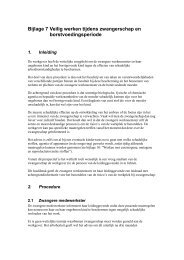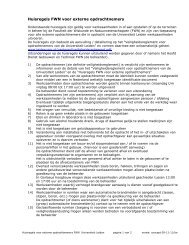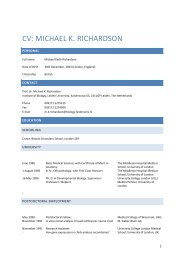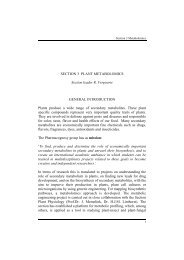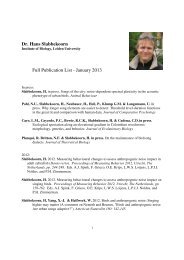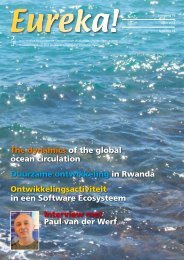infinite Beauty - Faculteit der Wiskunde en Natuurwetenschappen
infinite Beauty - Faculteit der Wiskunde en Natuurwetenschappen
infinite Beauty - Faculteit der Wiskunde en Natuurwetenschappen
You also want an ePaper? Increase the reach of your titles
YUMPU automatically turns print PDFs into web optimized ePapers that Google loves.
i’ve got it! one equation that explains all beauty! the finest beauty is<br />
beauty that overwhelms. one formula explaining all that overwhelms all…<br />
and i found it! in this article i will reveal to you the secret of beauty,<br />
in all of its aspects.<br />
BY: d<strong>en</strong>nis KaP Power<br />
18<br />
math in nature<br />
<strong>infinite</strong> <strong>Beauty</strong><br />
origin - universiteit leid<strong>en</strong><br />
Why all this fascination for all-explaining theories?<br />
Explanatory power makes it possible to control a situation,<br />
and control is power. Ev<strong>en</strong> loosing control<br />
gives us a feeling of power because we are the ones<br />
to decide to give control away to the unknown. The<br />
more we know about a system, the more we can control<br />
it, right? Just take a look at the weather, which<br />
we can hardly control. It’s proportional to the explanatory<br />
power of the average weather forecast.<br />
Complem<strong>en</strong>tary to my own grandmothers’ recipe<br />
of iron cakes, a local delicacy in the famous city of<br />
Vlaarding<strong>en</strong>, it carefully describes us how to make<br />
it. I know by experi<strong>en</strong>ce that it will result in delicious<br />
iron cakes.<br />
the Gold<strong>en</strong> ratio<br />
Coming back to the all-explaining equation, I must<br />
admit something; it wasn’t exactly me who discovered<br />
it. It was probably Pythagoras who worked on it<br />
first and it was Euclid who first explicitly wrote about<br />
it around 300 BC:<br />
“A straight line is said to have be<strong>en</strong> cut in extreme and<br />
mean ratio wh<strong>en</strong>, as the whole line is to the greater<br />
segm<strong>en</strong>t, so is the greater to the lesser.” 1<br />
We take a line and divide it into 2 parts. If the ratio of<br />
the separate fragm<strong>en</strong>ts is the same as the ratio of the<br />
complete line as opposed to the biggest fragm<strong>en</strong>t, we<br />
will see that this ratio equals 1,618034. This irrational<br />
Figure 3: V<strong>en</strong>us de Milo, a statue on display at the Louvre museum, obeys the rules of the<br />
gold<strong>en</strong> ratio. Several body features lie apart from each other according to the gold<strong>en</strong> ratio.<br />
(Photo: R.M.N./Arnaudet - J. Schormans; www.louvre.fr)




